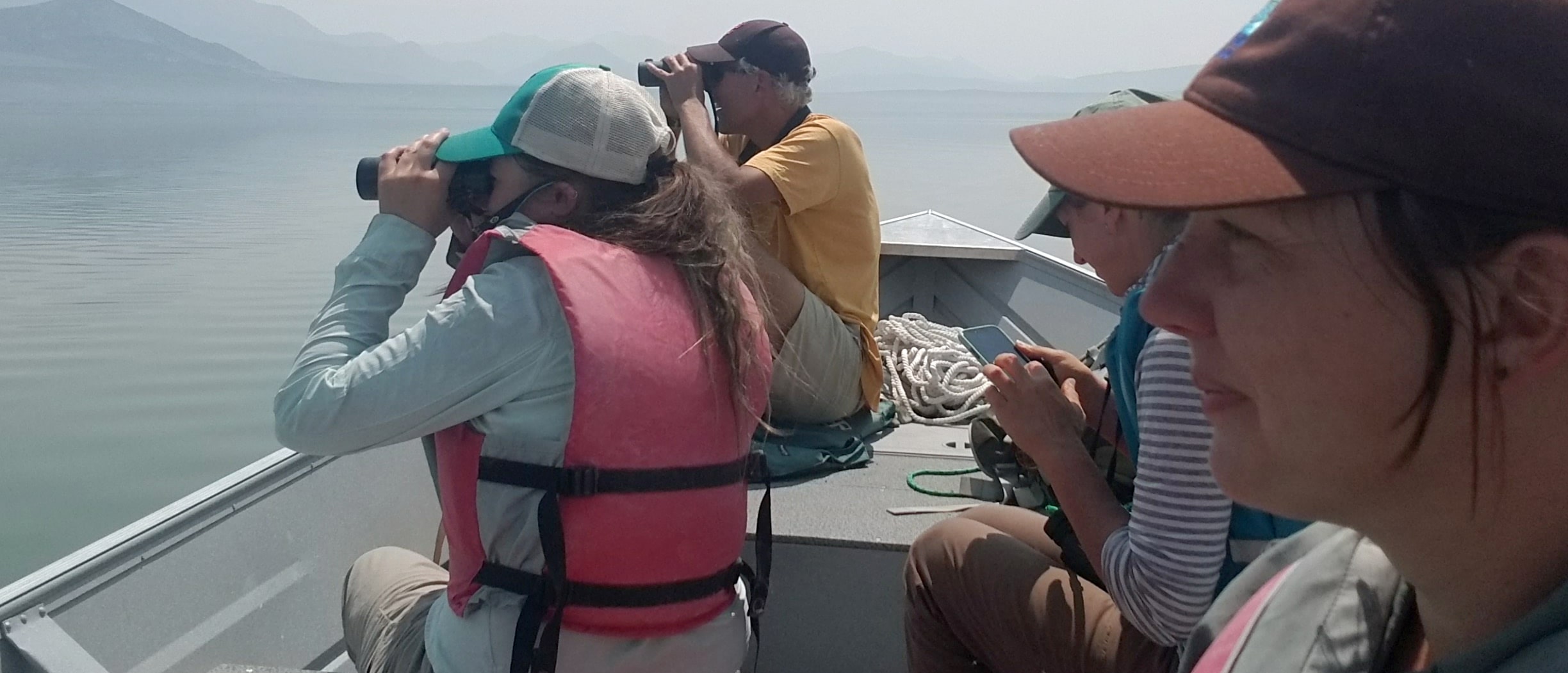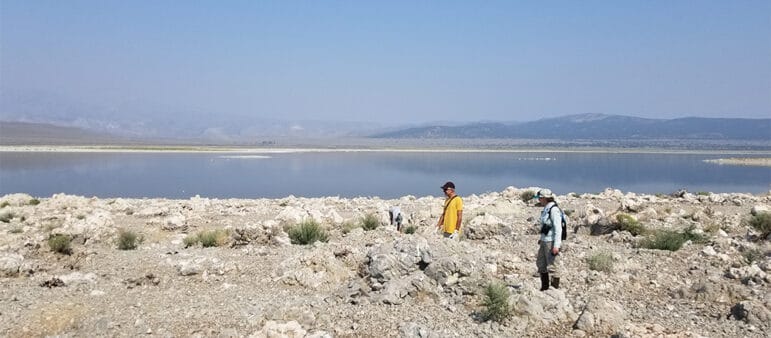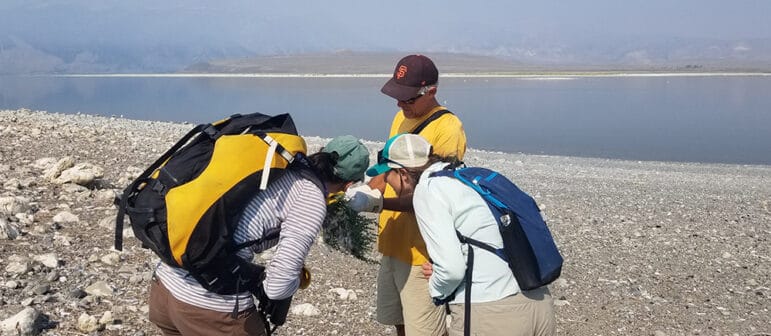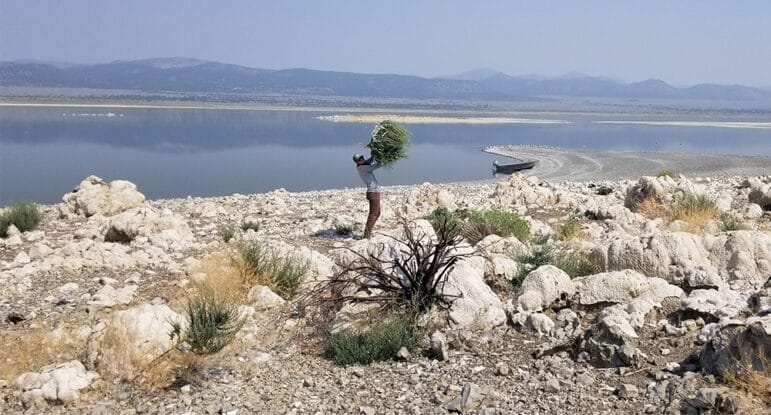
On a recent August morning Mono Lake Committee staff boated out to Twain Islet to hand-pull invasive Bassia weeds to protect critical California Gull nesting habitat at Mono Lake. This was the second season, after a prescribed burn in 2020, of follow-up intervention and evaluation, in partnership with the Inyo National Forest, to control and reduce Bassia on Twain Islet. Twain is home to over 50% of all nesting California Gulls at Mono Lake.

The invasive plant Bassia hyssopifolia has long been present in the Mono Basin, but it has aggressively expanded on the Negit Islets since 2012. The bushy, annual, alkali-tolerant weed grows up to several feet in height and after it dies, it remains firmly rooted, covering what was otherwise barren ground—the favored nesting habitat for California Gulls.
Twain Islet and the surrounding Negit Islets have been important gull nesting habitat ever since Negit Island was connected to the mainland decades ago due to the Los Angeles Department of Water & Power’s excessive water diversions from Mono Lake’s tributary streams. Coyote predation due to an artificially lowered lake forced the gulls to relocate.
Giving the gulls some space
Coyotes pose a threat again as Mono Lake falls lower (it’s now more than 11 feet below its mandated level), but the weeds acutely squeeze available nesting habitat, adding further challenges for the gulls. Committee staff plan to return to Twain Islet again soon to finish hand-pulling the remaining Bassia plants before they go to seed.
The Inyo National Forest conducted a prescribed burn on the islet in February 2020 with the help of the Committee’s research boat. The burn was successful beyond expectations, and the following summer nesting season, 3,136 new gull nests appeared on Twain Islet. The gull population increased substantially compared to 2018 and 2019 due to the eradication of Bassia.
Point Blue Conservation Science completed surveys of the gull colony this summer, continuing a research legacy that began 38 years ago, but the results will not be available until the end of the year. Anecdotally, the number of gulls nesting on Twain this year looked encouraging.
The most effective method of controlling Bassia post-burn is hand-pulling. Since the prescribed burn, new growth has been relatively sparse, but with Twain remaining the single most important island for nesting California Gulls on Mono Lake, the focused work is to keep this habitat weed-free. The bigger-picture work to restore Mono Lake to a healthier, higher level continues.
Top photo by Rose Nelson.


